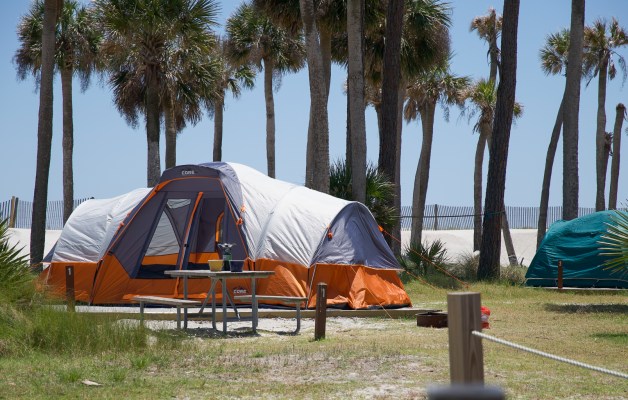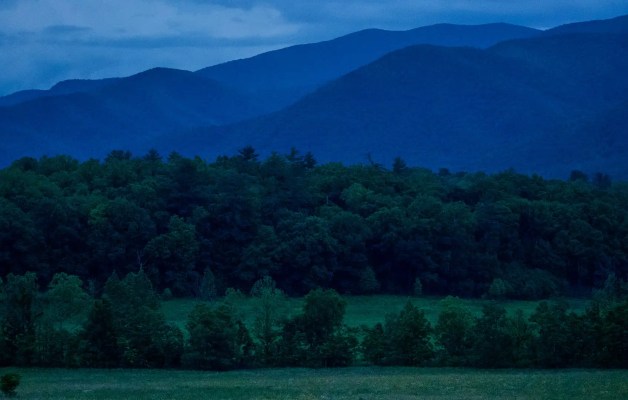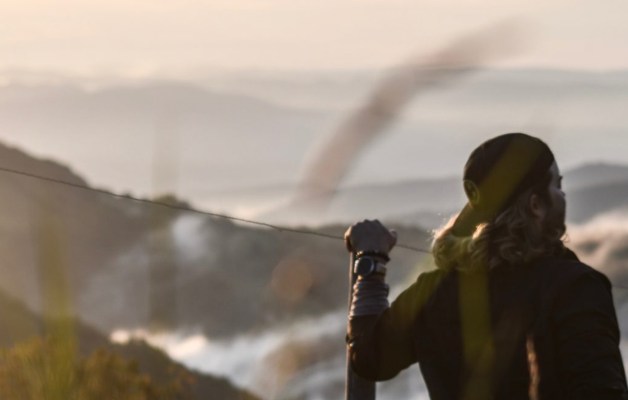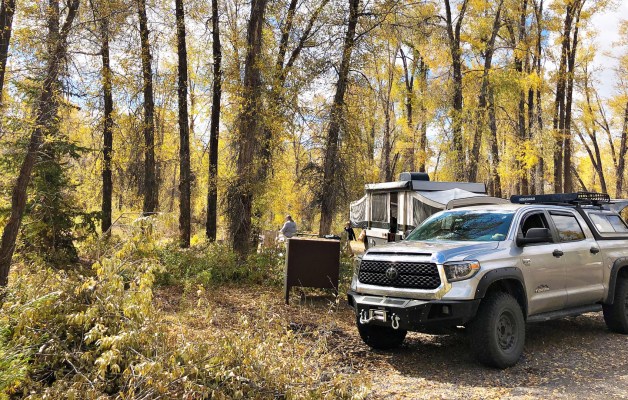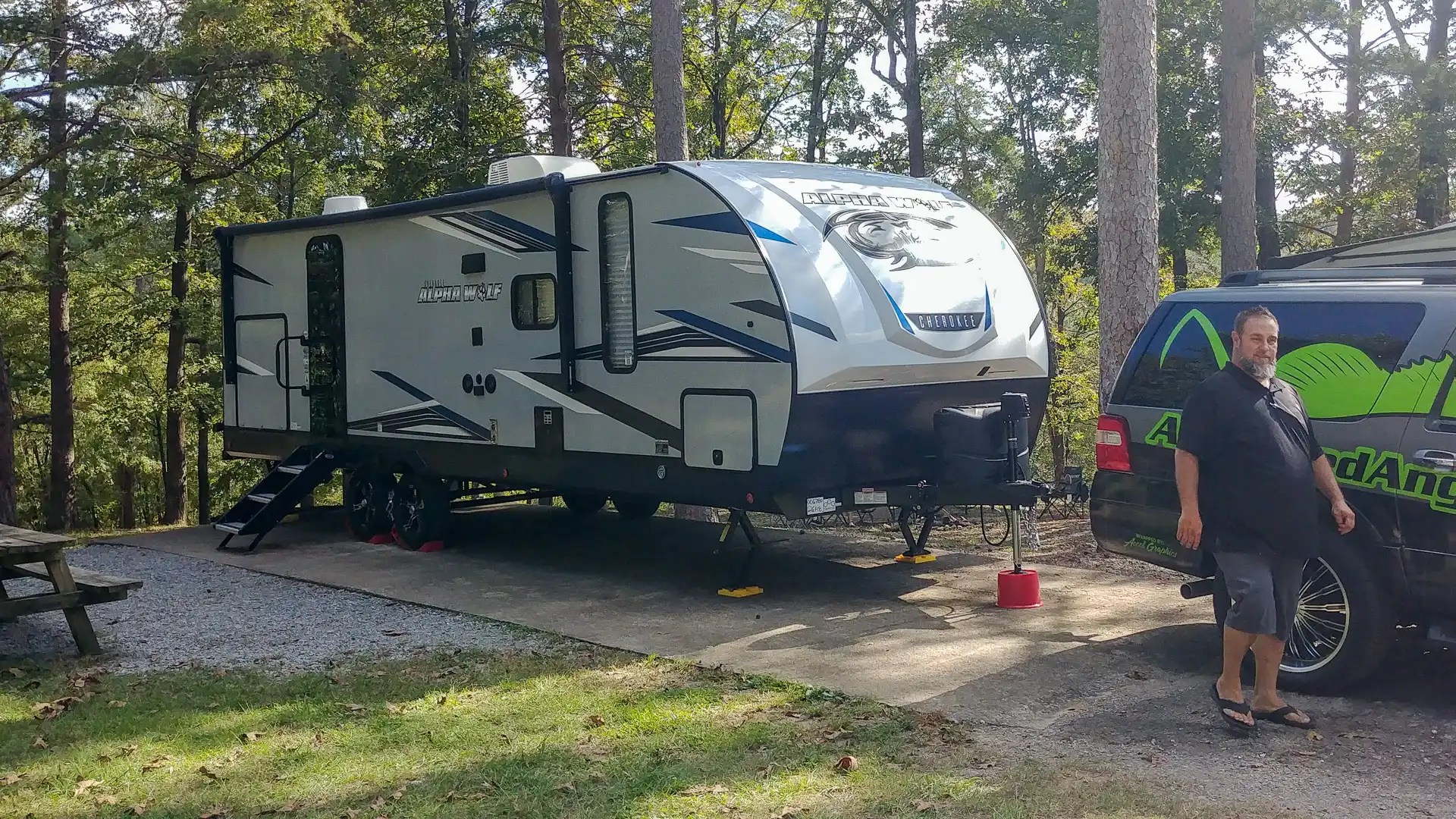
My wife and I recently purchased our first travel trailer and learned a lot in the process. There is a lot more to purchasing a camper than just looking at your vehicle’s towing capacity and finding a camper that you like. Doing some homework on your tow vehicle and needs is a wise first step, but you also need to find a camper that functionally meets your needs.
Camping is a lifestyle.
Whether it’s dirt camping in tents or RV camping, it is a way of life for many. For my wife Christina’s family, RVing has been something they’ve done for generations. Christina has many fond memories of time spent camping with her family, all the way back to her great-grandparents and her grandparents as a young girl. When her parents inherited her papa’s Airex motor home in the late ’90s, when our daughters were born, a fifth generation began to participate in those family traditions.
They would go to McCloud, Calif., in the RV and set up camp for two weeks. The whole experience would be around the motor home, but Christina and the GirlzO’S (our nickname for our three O’Sullivan daughters) would set up a tent and absolutely love it.
My family… not so much.
We have one camping story that includes my dad purchasing a VW conversion van and a “two-man” tent. (How anyone would have actually considered that sleeping quarters for two grown men, I will never know.) Suffice it to say, it didn’t work for two boys, 13 and 10, and when it collapsed in the middle of the night, my brother went into the camper, and I slept through it; we went home the next day.
I never really warmed to the Gregory family camping experience. Mostly because it meant I was sleeping on hard ground in a tent at the foothills of Mount Shasta (read COLD), and I had to take spit baths like the girls did. I usually stayed a weekend, and that was about it.
The one time I enjoyed the McCloud experience was the one time I borrowed a camp trailer from a friend of ours. I got to sleep in a bed, in a camper that had a heater, a bathroom, a refrigerator and a shower. Even though I got strep throat on the first day of the trip, after hitting the local clinic, I was better in a couple of days and enjoyed the outing.
Christina and I work in the fishing media business. For the past 20-plus years, writing, photography and professional fishing have been part, or all, of our living. At some point, we posited that once the GirlzO’S graduated from high school and became self-sufficient, we would follow the Elite Series and tours in support of the anglers while building content for our own website.
The girls are now 19, 20 and 22 and are at a spot where they can largely handle themselves, so we decided it was time to look into it. I envisioned that being in hotels or vacation rentals through one of those community rentals websites. When we started looking into the year, we realized that if we spent just short of six weeks on the road renting vacation houses, we would have spent the equivalent of what it would cost to make a payment and pay the insurance on a camper.
So, in July of this year, we started shopping – man, was it confusing. There are so many different options, so many numbers and brands and types, and it was all so confusing.

The search begins
Because I have an SUV that I tow my boat with, we knew we were going to be looking at a travel trailer. So, we looked online and browsed the options; that was little help. We decided that going to a couple of dealers might help and give us a sense for what was out there. We live in Southside, Ala., near Gadsden, so we went to Campers Unlimited and then drove to Anniston, Ala., and looked at Gander RV, and it did little to give us an idea of what we needed.
In fact, before we understood what we really needed, the salespeople really could have steered us in a wrong direction. One of the first questions any of them asked us was, “What do you tow with?” When we told them our vehicle was a 2010 Expedition EL, their response was, “Oh, yeah, you’ll be fine.” Had we based our purchase decision on those first informational forays, we may have gotten something that would have been too heavy for our tow vehicle’s overall capabilities.

Towing capacity
I did some internet research on my SUV and looked at my owner’s manual and discovered that with the tow package that was installed on my vehicle, it has a maximum tow capacity of 9,200 pounds. At first, I figured if the trailer weighed less than that, I would be fine, but that’s not the case. I talked to my father-in-law Dennis and Christina’s uncle Kenneth, who told me there were a lot more factors to consider.
To figure out the camper I needed, I had to figure out the curb weight of my truck, the tow capacity, the tongue weight, the overall weight of the camper I would be towing and the payload that would be in the truck. That payload had to include the passengers of the vehicle (including pets) and any other things we may carry in the camper and the truck. Some of that information was available on the sticker in the driver’s doorjamb of my truck and some came from specifications lists on the internet.

Christina’s uncle Kenneth’s first camper was a travel trailer, and while doing his research, a friend gave him a calculator spreadsheet that helped him narrow down the camper size he needed. He gave us that workbook, complete with formulas for calculating, and that helped us narrow down the type of camper we could shop for.
Through that homework, we learned that if we shopped for campers with a dry weight of less than 6,500 pounds, and around 650 to 700 pounds of tongue weight, we would be in the sweet spot for my vehicle.
Shop the weight range first
There are plenty of amazing campers on the market, some that we absolutely fell in love with. But what we did after going through the homework with Dennis and Kenneth was set a dry weight range of under 6,500 pounds because that would allow us to load the camper and keep the camper’s gross vehicle weight rating (GVWR) well short of my total towing capacity of 9,200 pounds.
In truth, when loaded, I wanted to be 10 to 15% less than the capacity of my SUV when towing after packing. I assumed that would allow us to load the camper with plenty of stuff and still be within the safe operating range of the vehicle.
Then we hit the internet to get a list of models to look for.

Choose layouts, then shop brands
We decided that we were going to be looking for a “couple’s camper” layout as opposed to more of a family-friendly model. Because more than 90% of the time, our traveling circus would be myself, Christina, our 10-pound Yorkie Tucker and 15-pound miniature goldendoodle Finnegan, a bunkhouse style would have wasted space and added weight. We initially opted to look at rear kitchen models, although we eventually settled on a rear bathroom version.
Armed with our weight range, we looked at brands that had the layout we wanted within the weight range we needed. At one point, we found a front kitchen model that had a rear bedroom layout with a second slide out that would have given us more room in the bathroom, but the tradeoffs were severely reduced outside storage for water, sewer and equipment needs and a tongue weight that was more than 1,000 pounds, something the weight distribution hitch couldn’t accommodate – we’ll get into that in a future piece.
We found that Forest River, Inc. had a few brands that fit our needs, and we found a Jayco model that fit as well. We loved the colors and features of Forest River’s Vibe brand, but the price on those was a bit too steep for us. Eventually, we settled on a list of brands that fit our needs.
We had one rear kitchen model we deemed a “unicorn” because the brand, Shasta, temporarily stopped building anything but bunkhouse models. After that, we had a Forest River Cherokee Alpha Wolf 29RK-L, followed by a Jayco Jay Feather 27RK-L. Both of those models had the rear kitchen layout we wanted, and they had theater seating, a dinette and a jackknife sofa that the girls could sleep on the few times they would tag along.
Christina copied the specifications of each model as well as the manufacturer layout graphic and made an info sheet on each model we were interested in. That way, we had all of the necessary information in our hands, in one place, when we went shopping.
Hit the lots
We then went shopping to dealers that had those models and decided to expand a little once we saw them.
After going to multiple dealers, we eliminated all of the rear kitchen models and took a second run at layouts to locate a layout that would fit our needs and desires. While the RKs offered plenty of kitchen storage, the rear kitchen models were a little confined for space in the dinette and between the sink area countertop peninsula and table, plus the theater seating was a little overkill for us.
Eventually, after further shopping and discussion, Christina convinced me the Forest River Cherokee Alpha Wolf 26RB-L fit our needs. It is a rear bathroom model with an oversized U-shaped dinette and jackknife sofa in the slide out, a full storage setup in the bedroom at the front, a large bathroom with walk-in shower in the rear and a walk-in pantry to store food and appliances.
It has outside storage that extends from side to side of the camper and came complete with an outdoor kitchen area that includes a large refrigerator, an ice maker and a sink that is plumbed to drain into the gray tank. It even came with the rear folding luggage rack and a gas grill and holder that mounts to the fold-out stand by the outdoor kitchen.
The Alpha Wolf is an ultralight series model that is constructed with aluminum studs with fiberglass sides. The rig came in at 6,147 pounds of dry weight, which gives us plenty of room for equipment and supplies as well. But, had we not done our homework (thanks to sage counsel from experienced family members), we would have selected a model with a higher dry weight, and we would have pushed the tolerances for comfortable and safe towing, and that just wouldn’t have been right.
We’ve done an in-town “shakedown” outing at Noccalula Falls in Gadsden to test everything out and get comfortable, then the following week, we towed it 350 miles to Paducah, Ky., and back for a wedding and absolutely loved it. We’re learning as we go, and we will certainly share the lessons as we do.
The whole process took nearly three months from beginning to end, but it was the initial learning and research that helped us make the right decisions. We’re not giving up the house because we have the girls to think of, but we are looking forward to our work/live life on the road.


